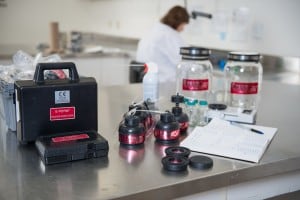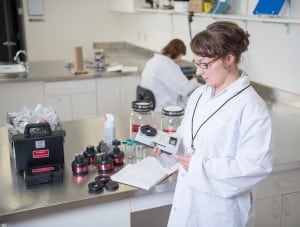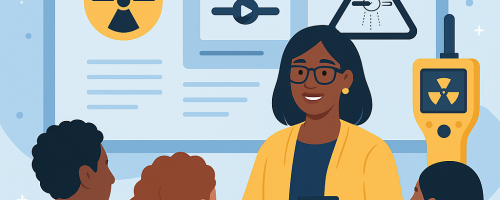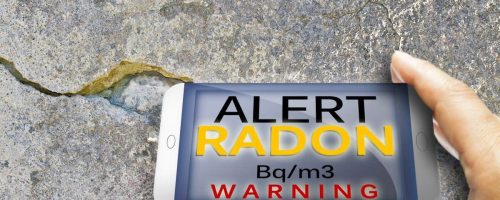It is a normal reaction to try and avoid danger when we see it. When faced with a hazardous object it is reasonable to stay away from it or, if possible, to remove it. When we smell smoke, we know to check for a fire and call for help. But what if the threat is not so easily detectable? What if it is present in our everyday lives and we cannot see it, smell it or taste it? This is exactly the kind of hazard that radioactive radon gas is . While undetectable by human senses, it presents a very real danger, in fact, it is the second leading cause of lung cancer after smoking.
How do we get exposed to radon? Produced in the ground it escapes through porous soils and fissures in the rock of the earth’s crust. Once released into the atmosphere, radon gas is diluted by air so its concentration is very low in the outdoors. However radon can seep into buildings through cracks in the foundation, through openings around drain pipes and sump pumps and through any other unsealed openings. When it enters a confined or enclosed space such as a basement, it can build to concentrations that are hazardous to human health.
THE RADIATION SAFETY INSTITUTE OF CANADA SUPPORTS HEALTH CANADA’S RADON AWARENESS CAMPAIGN AND ENCOURAGES YOU TO TEST YOUR HOME FOR RADON TODAY!
Radon gas breaks down further to form other radioactive particles called radon daughters or “progeny”. These particles attach themselves to dust particles in the air and can be inhaled and lodged in the lungs. The radon daughters emit a form of radiation known as alpha particles. The alpha particles deposit their energy in the lungs and can cause long term damage, in particular lung cancer. Not everyone exposed to radon will develop lung cancer but long-term exposure, specially for smokers, to elevated levels of radon in the home increases your risk of developing the disease. The only way to know the radon level in your home is to test.
 Since indoor radon concentrations tend to be higher in the fall/winter period and can significantly vary from day to day, Health Canada recommends 90 day testing during the heating season. Indoor radon concentrations are measured in units of radioactivity known as becquerels per cubic meter (Bq/m3). If the average concentration in a home is greater than 200 Bq/m3, then Health Canada advises taking remedial actions to reduce the concentration. The higher the radon concentration the sooner action should be taken. Remediation is fairly simple and inexpensive, the cost may vary from $500 to $3000.
Since indoor radon concentrations tend to be higher in the fall/winter period and can significantly vary from day to day, Health Canada recommends 90 day testing during the heating season. Indoor radon concentrations are measured in units of radioactivity known as becquerels per cubic meter (Bq/m3). If the average concentration in a home is greater than 200 Bq/m3, then Health Canada advises taking remedial actions to reduce the concentration. The higher the radon concentration the sooner action should be taken. Remediation is fairly simple and inexpensive, the cost may vary from $500 to $3000.
For over a decade the Radiation Safety Institute of Canada has carried out its National Radon Monitoring Program. The Program is run by our National Laboratories located in Saskatoon, where certified radon specialists will take your radon orders, ship out the monitors, analyse test results, communicate them to you and, most importantly, answer any and all questions you may have about radon exposure. The total cost of the order and laboratory analysis is only $55 plus tax.
Your piece of mind and your health are worth the investment. We urge you to not put it off and order your radon test kit today!







